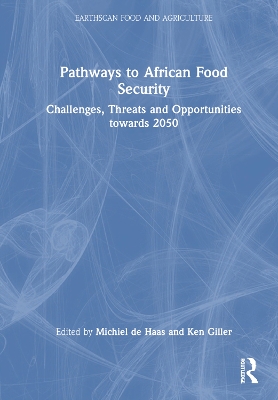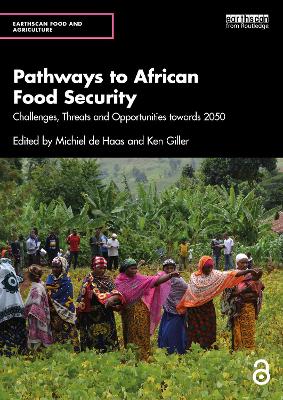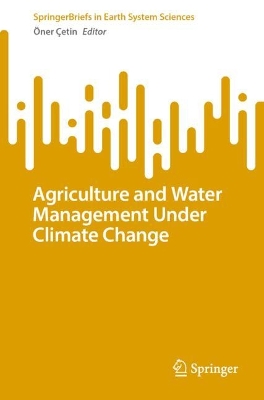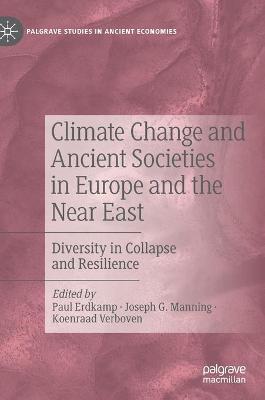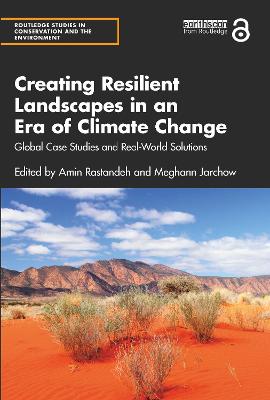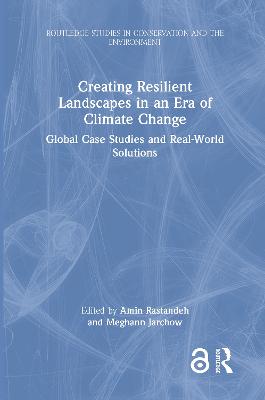Climate Change and Ancient Societies in Europe and the Near East
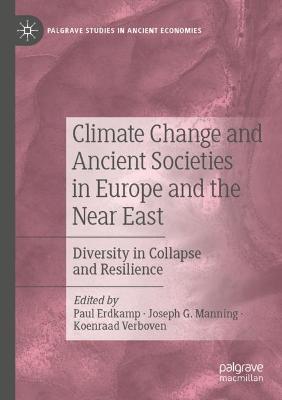 portes grátis
portes grátis
Climate Change and Ancient Societies in Europe and the Near East
Diversity in Collapse and Resilience
Verboven, Koenraad; Erdkamp, Paul; Manning, Joseph G.
Springer Nature Switzerland AG
11/2022
623
Mole
Inglês
9783030811051
15 a 20 dias
876
Descrição não disponível.
1. Chapter 1: A historian's introduction to paleoclimatology.- Chapter 2: A hard row to hoe. Climate change from the crop perspective.- Chapter 3: Who follows the elephant will have problems. Thought on modelling Roman responses to climate (changes).- Chapter 4: Famines, demographic crises and climate in Italy, 1650-1913.- Chapter 5: Collapse and resilience in prehistoric archaeology: Questioning concepts and causalities in models of climate-induced societal transformations.- Chapter 6: Climate, state building and political change in Egypt during the Early Bronze Age: a direct relation?.- Chapter 7: Vulnerability to climate change in Late Bronze Age Peloponnese (Greece).- Chapter 8: Saving up for a rainy day? Climate events, human-induced processes, and their potential effects on people's coping strategies in the Mycenaean Argive Plain, Greece.- Chapter 9: Peloponnesian land-use dynamics and climate variability in the first millennium BCE.- Chapter 10: Volcanic eruptions, veiled Suns, and Nile failure in Egyptian history: Integrating hydroclimate into understandings of historical change.- Chapter 11: The environmental imperialism of the Roman Empire in northwestern Europe.- Chapter 12: Seasonal drought on Roman rivers: transport vs. irrigation.- Chapter 13: The Antonine crisis: Climate change as a potential trigger for epidemiological and economic turmoil.- Chapter 14: Climate change and the productive landscape in the Mediterranean region in the Roman period.- Chapter 15: Viticulture as a climate proxy for the Roman world? Global warming as a comparative framework for interpreting the ancient source material in Italy and the West (ca. 200 BC-AD 200).- Chapter 16: Risks for farming families in the Roman World.- Chapter 17: Figures in an imperial landscape. Ecological and societal factors on settlement patterns and agriculture in Roman Italy.- Chapter 18: Hydrological changes in Late Antiquity: spatio-temporal characteristics and socio-economic impacts in the Eastern Mediterranean.- Chapter 19: Resilience and adaptation at the end of Antiquity. An evaluation of the impact of climate change in Late Roman western-central Anatolia.- Chapter 20: The social metabolism of past societies. A new approach to environmental changes and societal responses in the territory of Sagalassos (Turkey).
Este título pertence ao(s) assunto(s) indicados(s). Para ver outros títulos clique no assunto desejado.
Ancient Economies;Climate change and human history;Climate-induced societal transformations;Roman responses to climate;Roman Empire;Collapse of past societies
1. Chapter 1: A historian's introduction to paleoclimatology.- Chapter 2: A hard row to hoe. Climate change from the crop perspective.- Chapter 3: Who follows the elephant will have problems. Thought on modelling Roman responses to climate (changes).- Chapter 4: Famines, demographic crises and climate in Italy, 1650-1913.- Chapter 5: Collapse and resilience in prehistoric archaeology: Questioning concepts and causalities in models of climate-induced societal transformations.- Chapter 6: Climate, state building and political change in Egypt during the Early Bronze Age: a direct relation?.- Chapter 7: Vulnerability to climate change in Late Bronze Age Peloponnese (Greece).- Chapter 8: Saving up for a rainy day? Climate events, human-induced processes, and their potential effects on people's coping strategies in the Mycenaean Argive Plain, Greece.- Chapter 9: Peloponnesian land-use dynamics and climate variability in the first millennium BCE.- Chapter 10: Volcanic eruptions, veiled Suns, and Nile failure in Egyptian history: Integrating hydroclimate into understandings of historical change.- Chapter 11: The environmental imperialism of the Roman Empire in northwestern Europe.- Chapter 12: Seasonal drought on Roman rivers: transport vs. irrigation.- Chapter 13: The Antonine crisis: Climate change as a potential trigger for epidemiological and economic turmoil.- Chapter 14: Climate change and the productive landscape in the Mediterranean region in the Roman period.- Chapter 15: Viticulture as a climate proxy for the Roman world? Global warming as a comparative framework for interpreting the ancient source material in Italy and the West (ca. 200 BC-AD 200).- Chapter 16: Risks for farming families in the Roman World.- Chapter 17: Figures in an imperial landscape. Ecological and societal factors on settlement patterns and agriculture in Roman Italy.- Chapter 18: Hydrological changes in Late Antiquity: spatio-temporal characteristics and socio-economic impacts in the Eastern Mediterranean.- Chapter 19: Resilience and adaptation at the end of Antiquity. An evaluation of the impact of climate change in Late Roman western-central Anatolia.- Chapter 20: The social metabolism of past societies. A new approach to environmental changes and societal responses in the territory of Sagalassos (Turkey).
Este título pertence ao(s) assunto(s) indicados(s). Para ver outros títulos clique no assunto desejado.

